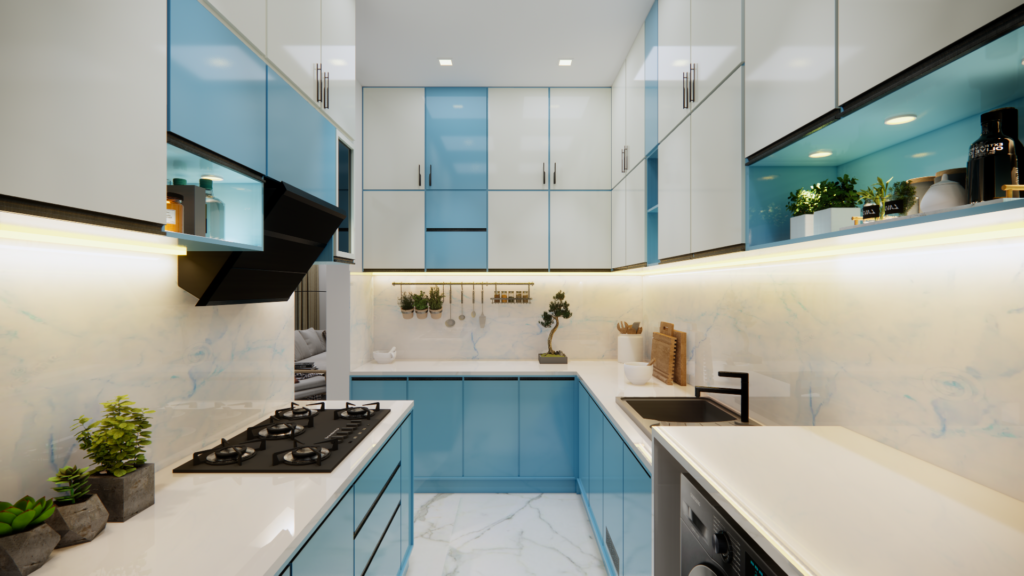Top Color Scheme Ideas for Interior Design of Your Home

Interior design is both an art form and a science. If you want to give your client the best living space, you can’t have one without the other. It takes years of study to comprehend the importance of floor plans, room layouts, furniture placement, decor selection, and other considerations.
But understanding color concepts is the most essential part of this mind-blowing career. An appropriate color palette is used in effective interior design. Choosing interior paint colors on your own is inadequate. At EPS Interior Industries Each color’s tone has a profound impact on our emotions and a particular meaning for each of us.
Types of House Interior Color Schemes
As a designer, it’s important to let your imagination flow when it comes to establishing an appealing color palette. However, there are situations when innovation is not required. There are currently many other color palettes accessible for experimenting with for a unique effect.
If homeowners have a preference for particular colors or have a negative reaction to colors that they should avoid, this might be a fantastic starting point for you to design advanced color schemes.
Complementary Colors
Complementary colors are those that are situated on the color wheel’s opposing edges. A complimentary color scheme is intended to reflect the character of a contrasting color. Applying a complementing color scheme effectively means using one quiet and one prominent color to avoid any overtones or undertones.
Split Complementary Colors
When decorating a home for a customer who wants dramatic effects, a split modern color scheme with alternating basic colors is the best option. At EPS Interior Industries, we want to work with you to design your ideal home, one room at a time.
Select a base color, then merge it with two adjacent, strong colors to create strong shades. This dramatic effect can help you, as a designer, stand out, especially when creating parts or focal areas.
Monochromatic Colors
Monochromatic colors are very fashionable in the current era of minimalism. They consist of one primary color and all of its shades and tints. Swatches are made by changing the underlying color’s saturation and value to get incredibly subtle tones.
What is the importance of the interior color scheme?
Even though it may seem simple, choosing a successful color scheme can make or break your ability to produce a stunning interior design for your clients. Different colors can change your mood in different ways, including bright, cool, and muted colors.
Connect the house
A color scheme can be utilized to unify every room and establish a striking visual language throughout the house. The foyer, living room, bedroom, hallway, and kitchen should all be painted the same color as the exterior of the house.
For example, you can keep the room neutral and monochromatic by using throw pillows, sectionals, or lampshades to add splashes of color while maintaining a major flow across the color wheel.
Mixed Madness
Instead, to provide a new viewpoint, select distinct interior color choices for different regions of the house. Some clients are willing to try out different color schemes. Instead of concentrating on a single room’s interior, use complementary colors from room to room.
Neutral is the norm
Don’t worry if your clients like a calm, peaceful environment with no splashes of color. Using colors that are neutral does not imply being uninteresting. You may recommend calm color schemes with attractive pastel colors and explore their warm undertones.
To bring down the feel of the home color, pick a mild grey or brown palette. You can still use pale blues, taupes, faint pastel greens, or contrasting shades of white to experiment with the color palette’s undertones without compromising the client’s choice of neutrals.
Let the natural light speak
Depending on how much natural light each room receives, the color pallet of the walls can be modified. If you don’t think about it, the space will be either too dreary or too vibrant.
Even pastel colors appear brighter in a space with an abundance of sunlight, whereas gloomy settings appear to foretell warm tones. When choosing a color scheme, it’s important to take natural light into account. It’s time to implement your new home’s color scheme throughout your design after selecting it. Begin a project with EPS Interior Industries right now and get in touch with one of our interior designers for help.
How Can Interior Color Schemes Be Chosen for Your Home?
An attractive interior paint color scheme can be easily created by starting with the room’s basic elements. Architectural features, furniture, flooring, tiles, or artwork are examples of non-flexible house elements.
Get Motivated
Anytime is an ideal time to be inspired. It might be a picture or a topic that both of your consumers and you like. The cornerstone of your colour scheme can be anything that captures the sight and evokes delight in the heart.
Value the color tone
Color values must be considered when selecting colors. The darkness or lightness of a color is referred to as its color value. Using these principles could make your color scheme more appealing and meaningful.
Plan thoroughly before executing
The huge variety of colors available can be overwhelming. You can explore the room with all of its color choices by creating a floor plan or 3D home model. Make sure you show the buyer the swatches and get their approval.
By positioning different furniture pieces, structures, and other items from the space against the desired color, you can create a visual guide. Good planning will assist you in achieving your desired goal and avoiding unnecessary mistakes when implementing your design concepts.
Consider natural light
Even in small spaces, natural light has a huge impact on every color. After all, colors are a reflection of light. Therefore, to determine how light from both artificial and natural sources will combine with wall paint and accent colors, use the real-time solar charts accessible in 3D software. When asked about the importance of colors in home interiors, EPS Interior Industries said: Color can make or break a space.
